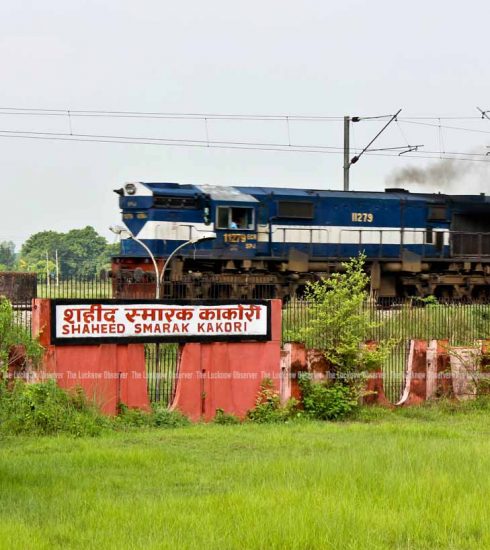Politics Eclipses Tourism
While crores are spent on glorifying long-gone politicians, the tourism sector is given step-motherly treatment and Lucknow continues to languish in the annals of history.
Until the time Uttarakhand was carved out, Uttar Pradesh had two queens who charmed tourists from far and wide – Mussoorie and Nainital. The two hill stations gone, UP was left to fend for itself, where tourism was concerned.
In the absence of any political will and lack of imagination among policy makers in Lucknow, tourism took backseat. In strange contrast, the number of tigers dwindled in UP’s forests while crores went down the drain in installation of larger-than-life statues of various political leaders of yesteryears. Political parties are leaving no stone unturned in flogging a dead horse and digging up old skeletons.
Let’s not talk about the Gandhis. But if Mayawati raked up Jyotiba Phule and Kanshi Ram, Mulayam Singh Yadav’s Samajwadi Party resurrected Ram Manohar Lohiya and Janeshwar Mishra (Chhote Lohiya).
When the Taliban blew up the Bamiyan Buddha statue, then chief minister of UP Rajnath Singh (presently Union home minister) announced that UP would have a statue of Buddha, larger than the one destroyed in Bamiyan. But that has not happened.
And that brings us to the query: Has Rajnath Singh forgotten his promise? Well, that is not surprising. Almost all politicians tend to forget the promises made to the people. So why blame him?
But one must not forget that tourism, leaving aside excise policy, is one of the main sources of revenue for any state in India, except Gujarat. Gujarat is officially dry, but liquor, illicitly produced or smuggled into the state, flows like the rejuvenated Sabarmati. Enough of Modi bashing…! Let’s come back to the subject of tourism.
What does Uttar Pradesh have which other states don’t have? Or to put it invertedly, what is it that UP does not have, but other states have?
The answer to both of these questions won’t sum up the real problem. Which is: Why is UP lagging on the tourism front?
Reason is one, but supplementaries could be many!
The main issue is that successive governments in Uttar Pradesh after the creation of Uttarakhand have not even thought about tourism. Because Taj Mahal fetches the government the kind of revenue that no other historic site fetches for any state in India.
Okay, let’s forget promotion of tourism in the state. What about Lucknow, which is the seat of power. What is lacking here is proper and effective branding of Lucknow as a place with historic links and a rich culture which, probably, no other city can boast of.
Most present day thinkers, entrepreneurs and even the younger lot feel that in the age of hardsell, branding is what matters. Cynics, however, disagree. If branding was important, then why did Uttar Pradesh fail and Gujarat succeed? After all, the brand ambassador for both the states (though consecutively) was past-expiry-date, over-exposed and over-sold personality with a white beard and transplanted dark hair.
The problem lies in the government’s total apathy towards developing infrastructure with the view to promoting tourism. Good roads without any railway crossings, special trains running connecting major tourist destinations in the state, and Lucknow air connectivity with other major cities like Agra or Jaipur would go a long way in boosting visitor arrivals. Will it ever happen, is anybody’s guess!
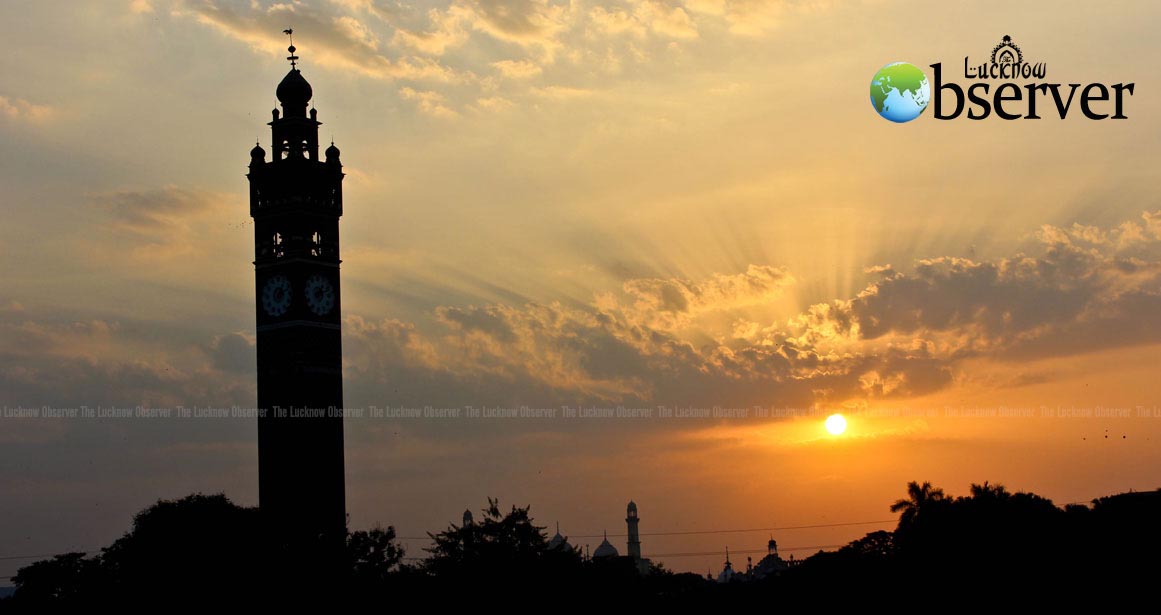
Clock Tower
Religious tourism a major draw
By Mehru Jaffer
Pilgrimage or faith based tourism is a key segment and the most recession free aspect of this industry.
Around 120 million domestic pilgrims travel nationwide. This is enough to bust the myth that faith based tourism is a niche. It is not. In fact it’s very mainstream.
The sufi circuit is discussed even by the national government. Talks have already been held on how pilgrim tourists can be lured to extend their stay and also combine leisure with prayers.
The government is advised to be sensitive towards the religious beliefs and faith of different travellers as this will help the hospitality and travel sector in terms of increasing revenue.
Industry stakeholders are concerned about the lack of physical infrastructure in and around religious centres. That is a major drawback for operations and for providing quality services. When a special train with 800 people reaches its destination, the teething troubles include a lack of basic infrastructure like decent hotels and guest houses where visitors can clean up and rest.
Pilgrims often change six to eight hotels and even use dharamshalas. There is no parking place for buses close to shrines despite the fact that most pilgrims are elderly. Sanitation concerns and pollution are real problems.
After the sufi circuit, there is the much traveled Buddhist circuit. That total estimated population of Buddhists worldwide is about 400 million. Inbound Buddhist travellers to India are estimated at around two lakh, way below potential.
Indian Railways already runs a Buddhist Circuit Special train to eight most important sights of Buddhism.
For Sri Lankan tourists there is a 22-day Buddhist special train from Chennai and Pawan Hans has plans to connect Buddhist places of like Varanasi, Bodhgaya and Singroli by helicopter.
If tourism authorities in UP have the vision and will it can do something similar.
What is smart city ?
A smart city is an urban region that is highly advanced in terms of overall infrastructure, sustainable real estate, communications and market viability. It is a city where information technology is the principal infrastructure and basis for providing essential services to residents. There are many technological platforms involved, including but not limited to automated sensor networks and data centres. Though this may sound futuristic, it is now likely to become a reality as the ‘smart cities’ movement unfolds in India as well.
In a smart city, economic development and activity is sustainable and rationally incremental by virtue of being based on success-oriented market drivers such as supply and demand. They benefit everybody, including citizens, businesses, the government and the environment.
The vision of a smart city includes taking advantage of the full potential of technology to transform urban life. London, one of the smartest cities in the world is already using smart technologies to help run transport systems. Smart technologies have the potential to help reduce environmental impacts, improve government services, integrate information across boroughs and service providers and improve the public realm.
What Lucknow can learn from London is to include the technicality of adapting technologies to an old city and its existing infrastructure.
From 2011 to 2021 London’s population will grow by a million – the fastest rate of acceleration ever. The Mayor’s Smart London Plan is for Londoners, businesses, researchers, investors and everyone who has an interest in the capital’s future. The Smart London plan puts Londoners at the heart – driven by the principles of transparency, collaboration and innovation. Adopting new approaches, through bringing people, technology and data together, to enable a more integrated solution to addressing London challenges. The Smart London Plan is an important blue print for UP where increasing urbanisation and load on rural land demands cities that can cope with challenges of urban living that are also magnets for investment.
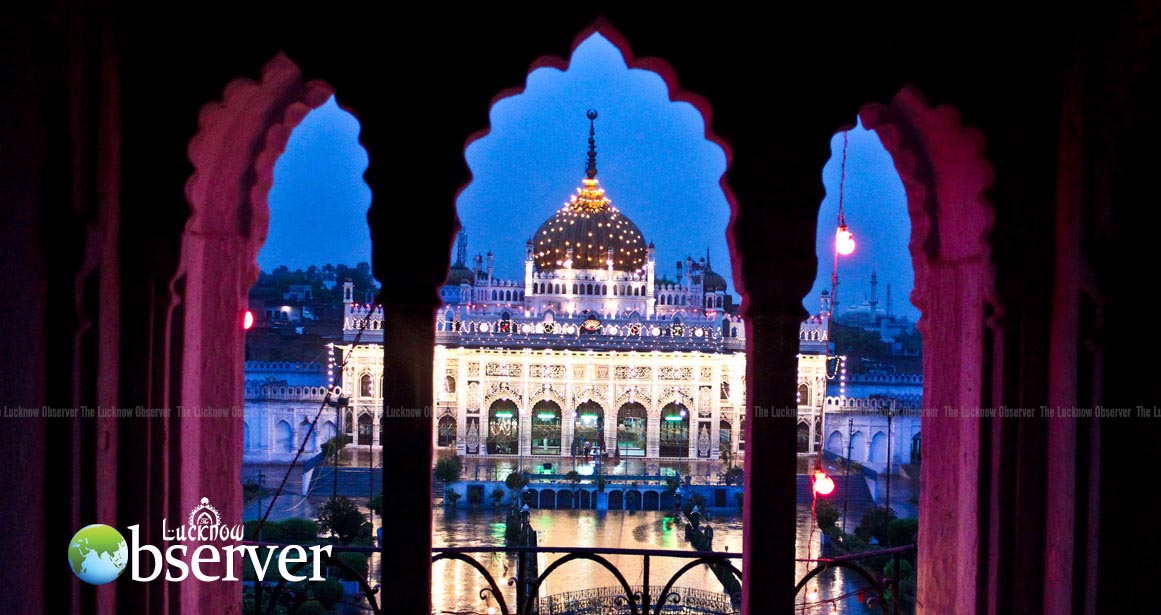
Chota Imambara
Where there is a will, there is a way
While the government’s bankruptcy of ideas to promote tourism in the state, with focus on Lucknow, is evident, the situation is not all that hopeless. There are people who have some innovative ideas to propel Lucknow and UP on to the international tourism scene,
Manoj Dixit, director, Institute of Tourism Studies, is one of them. “The publicity campaigns related to tourism are basically government-run affairs. The events are planned much in advance, but by the time a foreigner comes to know of it the event is already over. Due to policy differences between the state and the Centre, the promotional material reaches our overseas tourism offices late. So how do you expect a foreigner to take advantage of the event.
Secondly, there is no coherence in planning and promotion of events or activities. While the government does its own implementation, the travel and tourism sector players go by their own decisions, he points out.
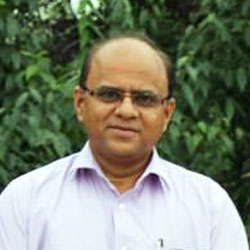
Manoj Dixit
“If we look at the states individually, then Rajasthan has a very good successful heritage tourism policy,” says Dixit. “Whereas UP has only framed a heritage tourism policy. They have announced a policy. We still have to go into the nitty-gritty of this because policies need to be converted into projects and projects need to be implemented and there are still a lot of hiccups.”
One of the major issues vis a vis Rajasthan and UP is ownership of properties. In Rajasthan, most of the palaces and forts are more than 300 or 400 years. Anybody owning a property prior to 1862 would have difficulty in claiming ownership unless he/she is in possession of the original documents. On that score, Rajasthan was quick enough to tackle the issue. The government passed a law that helped identify bonafide owners of properties and they were issued ownership documents, on the basis of which the heritage property owners could garner bank loans to convert their palaces into heritage hotels.
In UP, even those who claim to be owners of properties from even before 1862, would still have to produce documents to verify their claim. And if they do not have the documents, then their ownership stands in doubt.
“The problem lies here. Most of the people who claim to be owners of palaces but do not have documents to support their claim, stand to lose because the banks would not give them loans and they do not have the money to convert their properties into heritage hotel,” Dixit laments.

Prateek Hira
Prateek Hira of Tornos agrees with Dixit on this issue. Both of them also have the same view where the major problem of connectivity is concerned. “It takes seven to eight hours to reach places when they could be reached in three to four hours, only if the roads was upgraded to international standards,” says Hira.
Connectivity depends on the will of the governments in the state and the Centre. The state government is happy with figures from Agra and Varanasi. So they do not bother about other places that could be developed as tourist destinations.
“Lucknow has never been fed from any other tourist destination. We don’t have a direct connection with let’s say Agra, Jaipur or Khajuraho, or any other major tourist destination,” he points out.
Hira is also of the view that the trends in tourism have changed the world over. “Previously it used to be like visiting a place and going back with whatever memories…Now it’s about experiencing a place. People are opting for experiential products, rather than just visiting a place and seeing a concrete monument and going back with postcard images,”he says.
“For instance, if someone is travelling to Agra, of course, Taj Mahal is definitely on the agenda, and on priority. But that attitude has changed. They like to experience the place…explore the city, meet people and taste the food.
“In Lucknow’s context, let’s say if someone plans a visit, of course, the monuments are on the agenda. But they would also like to experiment with food, learn some cooking, indulge in some sort of walks. These are all experiential things. Look at Ahmedabad, they have their own walks, where there is people to people contact. The visitors are getting an insight into ways of life of the people.
In UP, Chambal and Etawah safari projects are getting popularity, but they are being fed from Agra, not Lucknow. If anybody wants to go from Agra to Varanasi, Lucknow is on the way. But connectivity is a problem. There are no flight stopovers, trains run on a single track and the condition of roads is appalling, he points out.
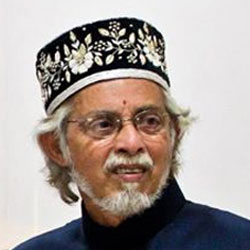
Asif Ali Mirza
Asif Ali Mirza, one of Wajid Ali Shah’s direct descendant, suggests that a lot of things could be done to promote tourism in Lucknow. “For instance, Moharram can be promoted as a tourist spectacle. Moharram programmes in Lucknow have various aspects that could be highlighted to make visitors aware,” he says.
The usage of Imambaras as centres of anti-terrorism teachings is another way to highlight Lucknow’s civilisation-friendly nature, he says, adding that the government should promote this aspect. “People from all over the world should be invited and seminars, talks, discussions should be held.”
Wajid Ali Shah was not only a great patron of performing arts but also a prolific writer, Asif points out and suggests that something ought to be done to promote his writings.
After all, how many people know that his writings titled Dulhan, Najo and Bani are excellent literary works, he asks.
Asif sounds disappointed at the way the Lucknow administration and the Archaeological Survey of India (ASI) haggle over jurisdictions while the upkeep of the monuments is neglected.
He cites the example of Chhota Imambara. Some years ago, one side of the imambara’s outer gate was damaged. He requested Lucknow’s then district magistrate to get the repairs done, but the DM passed the buck to the ASI, which in turn refused to entertain the request saying the outer gate was not part of the imambara complex.
The matter was then buried under the files.
Maintenance of protected monuments is the job of ASI, prevention of encroachments seems to be a state subject.
Following a public interest litigation (PIL) petition filed by a corporate lawyer, Syed Mohd Haider Rizvi, the court set up a high-powered committee to identify encroachments and to initiate steps to remove them in a systematic manner.
“Meetings are held, but no concrete or visible action has been taken so far, except for issuance of notices,” he points out.
In the case of Chhota Imambara, the high court ordered on 22nd May, 2014 that the gate be repaired, but the ASI contended that the gate was not part of the Imambara. Interestingly, the same gate had been repaired earlier in 2003 by the same ASI authorities.
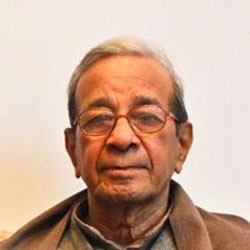
Padma Shri O.P. Agarwal
“I think that someone should explore and highlight various interesting things that are related to such monuments,” says Dr. O. P. Agarwal, a renowned conservator. “For instance, everybody talks about Imambara. But not many people know that Imambara is also Bhool Bhulaiya, in which it is easy for the person to get lost, but difficult to come out. Someone should highlight why Imambara was constructed like that. Was it by design or was it just a coincidence. To my knowledge, it was not meant to be Bhool Bhulaiya.”
“Secondly, there should be proper signages at vantage points that would give an insight to the monuments,” he points out.
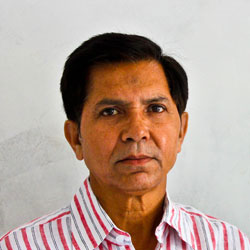
Dr Roshan Taqui
Roshan Taqui suggests that a lot of effort and money is spent by various agencies towards the upkeep of Lucknow’s monuments, but no one has ever given a thought to one interesting proposition. “We have management courses – hotel management, tourism management etc – run by several institutions. Why can’t someone start a heritage management course?” he asks.
“Actually, if you look into the sites that are drawing foreign tourists, you’ll notice that they are mainly related to religion, and in exception to that the Taj Mahal and some forts in Rajasthan,” says Rakesh Tiwari, director-general of Archaeological Survey of India (ASI).
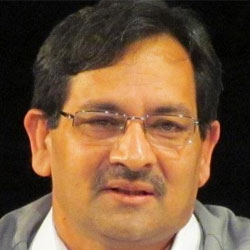
Rakesh Tiwari
“To attract tourists, foreigners or Indians from other places, the Uttar Pradesh government will have to improve basic amenities and facilities that are tourist friendly. Then infrastructure is a big problem. In addition to that improvement in connectivity by road, rail and air is much needed,” he points out.
“You may preserve and promote whatever heritage you have in Lucknow, but ultimately it depends on the tourists to decide which places they want to visit,” says Tiwari, adding: “These days people have much more awareness and are choosy about what to see and what not to see.”
“I feel that if you improve the infrastucture and facilities in places that are nearer to Lucknow, such as Shravasti or Naimisharan, then Lucknow may benefit as it is would fall on the route. Now vis-a-vis Lucknow, there are a great number of ancient monuments apart from the new ones that have come up. But what is required is proper publicity and promotion, coupled with dissemination of latest information about these places,” he suggests.
“The tourist department is already doing that. They have already updated their website, included more information. But there is always scope for improvement, be it the upkeep of the monuments or dissemination of information,” he says.








